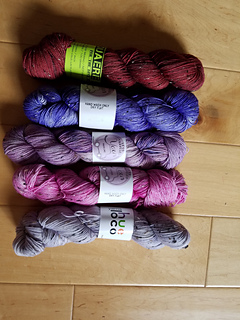At the end of March, I showed my first finished socks of 2022 and explained my own rules for which patterns I could knit. The main thing is not to force myself to knit socks if I can’t find a pattern I really like that fits the Sock Knitters Anonymous monthly challenge. This is why I’ve only knit two pairs so far this year. The latest socks were for April’s challenge and as it took more than a month to complete the first sock I did wonder if I’d finish the pair in the two months allotted. But once I’d finished the Tunisian crochet project, I was able to spend more time on these socks.
One of the challenges for April was underappreciated patterns. This means any pattern that was published before the end of 2021 that had fewer than 15 projects. A search of patterns I owned came up with a few options and I chose Crocus Socks from Interweave Knits, Accessories 2011. There were only 13 projects and the newest ones had been made in 2018, so I was pretty confident that I would not be beaten to 15 before I cast on but to make sure, I cast on just after midnight Eastern time on 1 April. Although this felt a bit like cheating as it was still 31 March in my time; but I reminded myself that the finish time is also in the Eastern time zone so I am not getting extra time.
The yarn I used is from Akara yarns and was a gift. I think it works perfectly with this pattern and I am always happy when I can use gifted yarn soon after I have received it. The pattern is toe-up with a short row heel – not my favourite – but I went ahead anyway. I worked the short rows as instructed and am not happy with my execution. But I am glad that I made them that way as it reminded me to use a different method on a cardigan I am working on.







